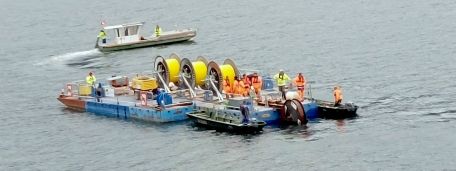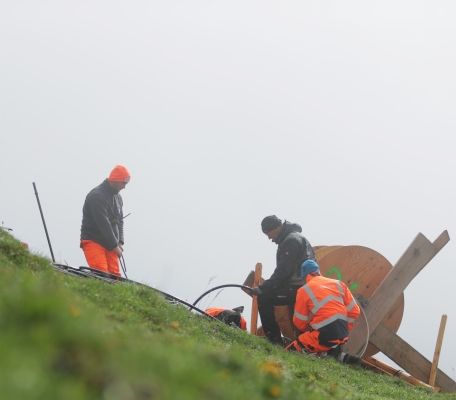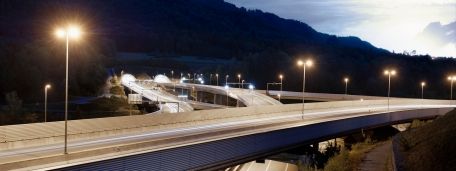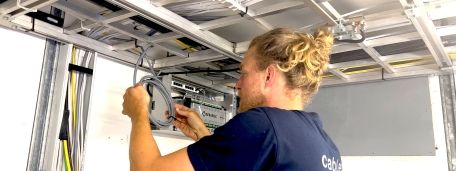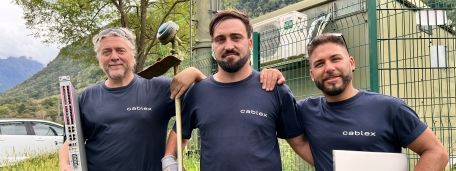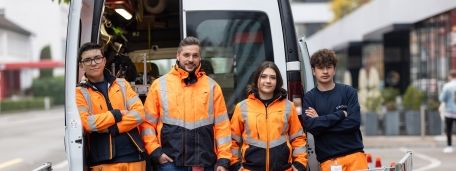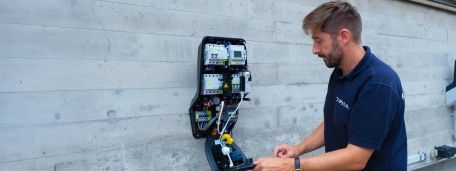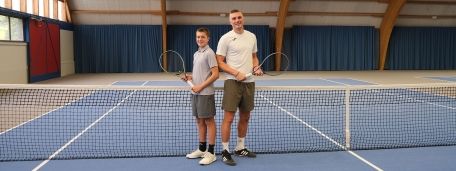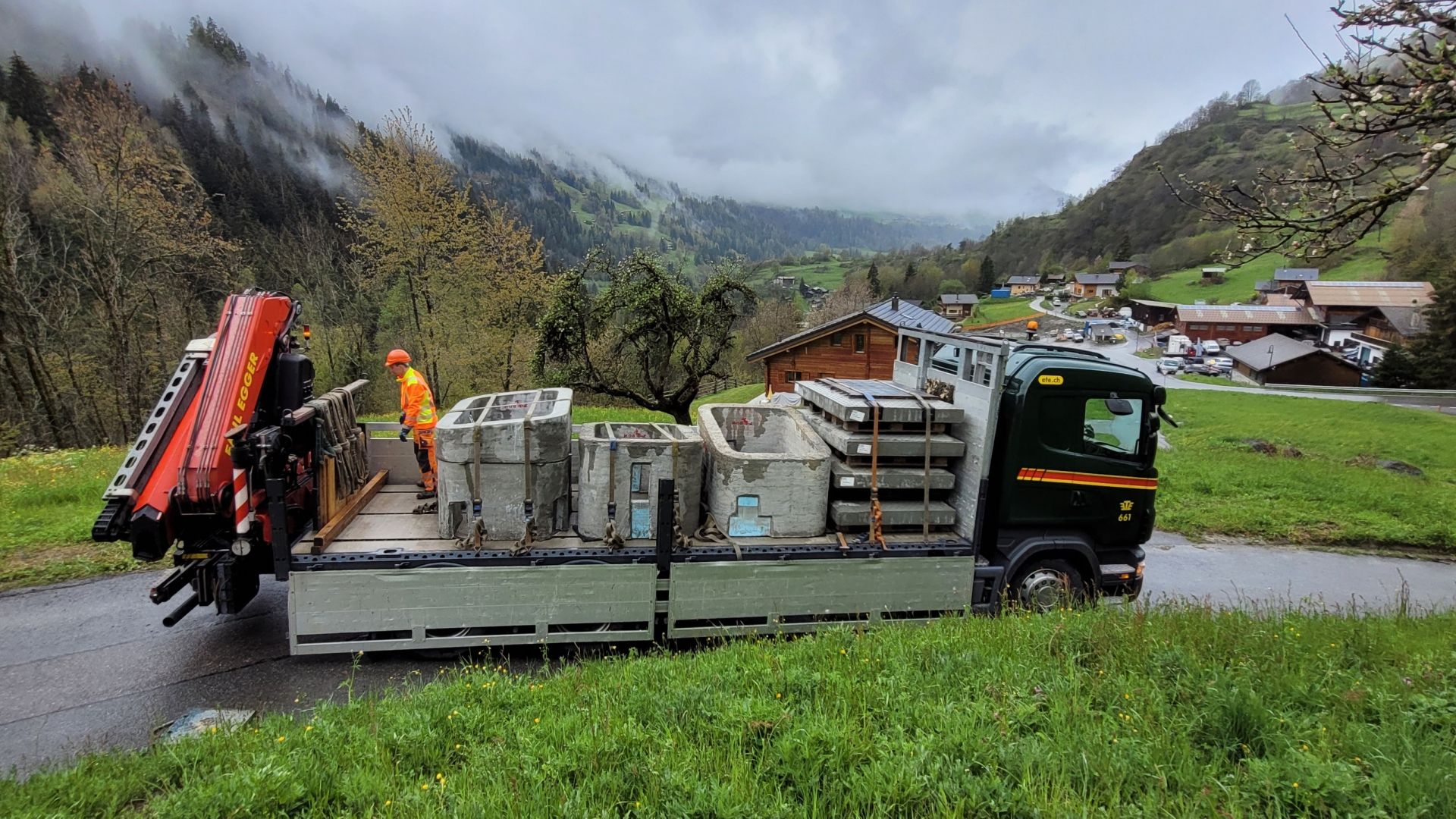
New shaft construction and reconstruction with shotcrete printing construction technology.
When carrying out network construction, it is always necessary to rebuild or reconstruct shafts. cablex has tested and validated a new process technology that integrates the automation and robotics of shotcrete 3D printing. The shortcrete technology from MOBBOT, which cablex tested, allows wall reinforcements and new shafts to be produced individually and made-to-measure. The dimensions can be transmitted traditionally as drawings or created using an online configurator. An automated robot system spays the walls layer by layer. A wall reinforcement can be produced within 30 minutes and used on site after 24 hours.
The wall reinforcement is placed on top of the existing shaft, meaning that only the lateral compaction needs to be restored on site. Once this is done, the shaft frame can be put on and sealed. The conventional encasing work for concreting is eliminated and the resources consumption minimised.
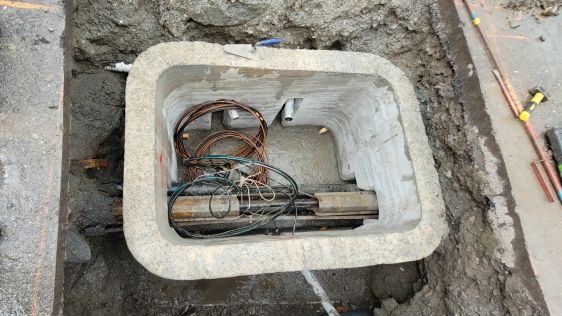
When does it make sense for cablex to use it?
Whether shotcrete 3D printing makes sense depends on the quantity of wall reinforcements or shafts and their design. The method can save time from an order quantity of four elements. Due to the flexibility of 3D printing, recesses for cables and a gradient can be factored in directly during production. This means that the method is also suitable for use in more complex installations.
Time comparison with traditional methods.
cablex uses two different production methods: The first is to place the shaft frame on sand-lime bricks and then concrete it. The second traditional shaft construction variant involves first concreting a wall reinforcement, onto which the shaft frame is placed in the next step.
Using conventional methods, a total of eight hours (two half days) are spent on forming, pouring and concreting. After the concrete has cured, the shaft frame and cover are applied. The employees then compact the remaining cavities with concrete. The wall thickness with this method is 20 centimetres.
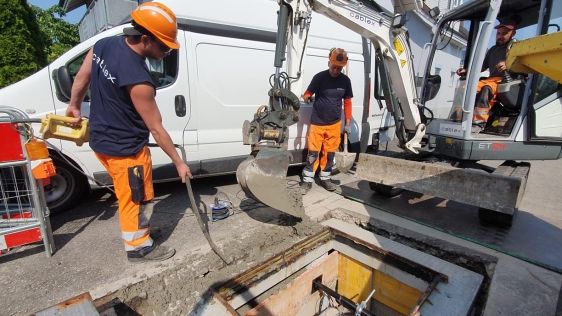
In MOBBOT’s experience, it takes an average of between half an hour and an hour to install a 3D spray-printed wall reinforcement, including assembly of the shaft frame. This means that up to four shafts can be completed per day. The possibility of supplying wall reinforcements together with the associated shaft frames also offers savings potential in terms of transport routes.
The time required for excavation and restoration is comparable for the conventional and 3D methods. The printed wall reinforcement method requires a larger excavation (approximately twice the excavation for lateral backfilling and compaction). At the same time, MOBBOT says that shotcrete 3D printing uses around 25 per cent less concrete.
This method offers the greatest potential in rollout projects where several shafts have to be completed per week.


